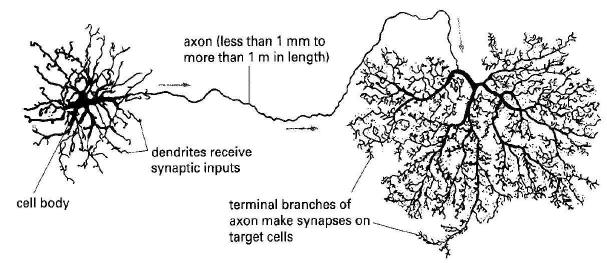
Teaching Physics with the Physics Suite
Edward F. Redish
Home | Action Research Kit| Sample Problems | Resources | Product Information
Problems Sorted by Type | Problems Sorted by Subject | Problems Sorted by Chapter in UP
 |
Teaching Physics with the Physics Suite Edward F. Redish Home | Action Research Kit| Sample Problems | Resources | Product Information |
Problems Sorted by Type | Problems Sorted by Subject | Problems Sorted by Chapter in UP |

The cell membrane of the axon maintains a potential difference of about 70 mV from the inside to the outside of the membrane. It therefore acts as a capacitor. In this problem we will estimate the capacitance of an axon and the electrical energy stored in the resting axon.
A. We will model the axon membrane as a long thin cylindrical capacitor of thickness a, diameter D, and length L, as shown in the figure at the right above. It is filled with a fluid having a dielectric constant κ (kappa). If the membrane is thin compared to the radius of the cylinder, we can approximate the cylinder as a parallel plate capacitor by cutting it along the length and flattening it out. It will then look something like shown in the figure at the right below. (We have used that the circumference of the cylinder is πD.) Calculate the capacitance of the capacitor in terms of the parameters of its shape and its dielectric constant. B. The values for the parameters in a typical axon are as follows:
Calculate the capacitance per unit length of an axon in Farads/mm. In addition to getting the value, show that your units work out correctly. |
|
C. Given the resting voltage difference across the capacitor plates, calculate the amount of electrical energy stored in an axon 1 mm in length.
Not finding what you wanted? Check the Site Map for more information.
Page last modified March 16, 2008: E52